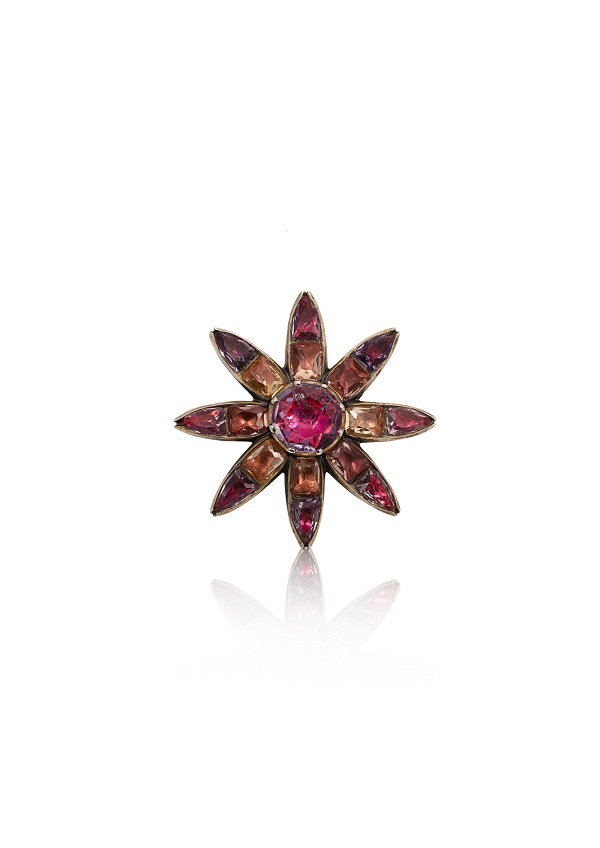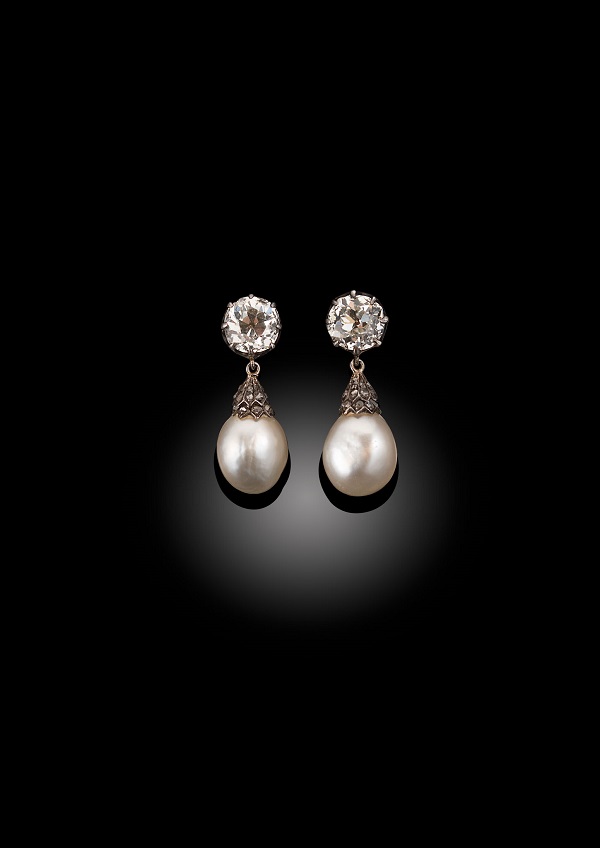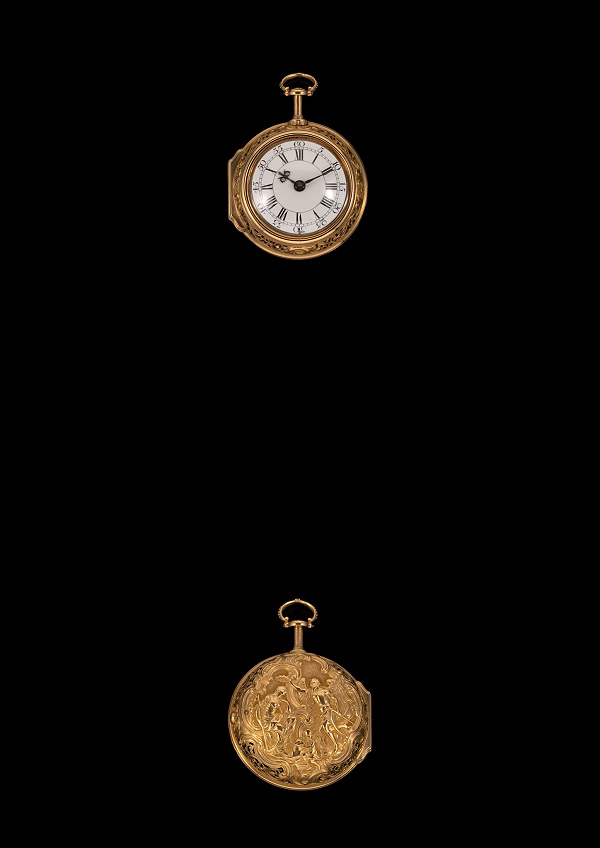The final Jewellery, Silver & Watches Sale of 2022 will take place on 24th November at Cheffins. Consisting of over 530 lots, the auction includes high value and collectible jewellery, a variety of watches and an interesting collectionof silver and objets de vertu.
Here, Fay Roach and Steve Collins give us their top picks from this fantastic sale.
Fay Roach, jewellery specialist, picks lots 77, 248 and 252.
Lot 77 – a Portuguese mid to late-18th century topaz flower brooch – estimate £700 - £900.

Fay says: “I love this brooch; it’s been entirely made by hand and is offered in extremely good condition for its age. It’s pink and orange tones make it typical of Portuguese jewellery from the 18th century, with its stones coming directly from the topaz mines which were discovered in Brazil throughout the 17th century. The stones were shipped by the Portuguese from Brazil back to Europe, where they were traded and set into jewellery. The stones have been foil backed, which gives them a wonderful sparkle in candlelight. It has been consigned from a local collection here in Cambridge and I am sure it will do well amongst both private buyers and the trade.”
Lot 248 - a pair of natural pearl and diamond ear pendants - estimate £4,000-£6,000

“The joy of natural pearls is that they are formed entirely without human intervention. Bearing in mind that only one in 500,000 oysters will produce a natural saltwater pearl, these have a rarity and quality which makes them incredibly sought after. In addition, pearl-bearing oysters were massively depleted by over-harvesting throughout the 18th and 19th centuries. Pearls are officially back in fashion in 2022 and we have seen the demand for them rise at auction.”
Lot 252 - An important pair of Burmese ruby and diamond ear pendants - estimate £30,000-£40,000

“These are the most expensive item in the auction and are easily the most important. Burmese rubies are some of the most in-demand stones on the planet. Easily identifiable by their specific and saturated colour, the most valuable rubies are those of ‘pigeon’s blood’ type, un-heated, from Burma (or Myanmar) which are now rivalling diamonds in their prices per carat. Prized for their beauty, durability, and rarity, it is the quality of the colour which most determines the value of Burmese rubies. These rubies high chromium content is what causes the vivid red hue of the ‘pigeon’s blood’ examples, which makes the Burmese ruby standout against those mined in other locations.”
Steven Collins, who is head of the Jewellery, Silver & Watches department picks lots 390, 290 and 489.
Lot 390 - A rare George III 18th century silver nutmeg grater – mark of Peter & Jonathan Bateman - estimate £400-£600

Steve says: “nutmeg became popular in the 17th and 18th centuries amongst the aristocratic classes when it was added to alcoholic beverages such as punch, 'cyder', pale wines and ales. At that time, it was the fashion for men to carry a nutmeg within a pocket-sized silver container equipped with a steel grater, in order to add freshly grated nutmeg to their drinks wherever they may be. Adding nutmeg to drinks was not just to enhance the flavour; in quantity, it is a mild hallucinogenic. The graters were very often in novelty shapes or particularly well made, allowing the fashion conscious in these social situations to show off their latest novelty item, which are now very collectable.
I like this particular one because, in addition to the build quality and the style, it bears the very rare mark of Peter & Jonathan Bateman. Peter and Jonathan were sons of the famous silversmith, Hester Bateman. Both apprenticed to their brother in law, Richard Clarke (husband to their sister, Letticia), they carried on their mother's business following Hester's retirement in 1790, registering their mark PB over IB. Sadly, Jonathan, who was married to silversmith Ann Dowling, died just 6 months into the partnership, in April 1791, so Peter and his now widowed sister in law continued the business together, registering their own mark PB over AB in 1791. Due to the very short time the partnership was in business, items of silver with the PB over IB mark are rare and extremely desirable and have become the 'Holy Grail' for Bateman collectors worldwide.”
Lot 290 - Robert Higgs, London - A mid-18th century quarter repeating pair cased pocket watch - estimate £5000 - £7000

“These days it is quite difficult to find total darkness, but before the days of luminous dials and electricity, or even gas lighting, the issue of telling the time in the dark was extremely challenging, especially if you didn’t have a candle to hand, because in those days when it was dark, it was REALLY dark! Pocket watches were made that would, literally at the push of a button, emit a series of chimes, allowing the wearer to tell the time, even in the middle of the night. The movements were, of course, very complicated and this particular example, made circa 1740, is an incredible feat of engineering. The skill required to build such a piece, with the tools and lighting of nearly 300 years ago is astonishing. Both the case and mechanism are works of art. It’s an absolutely stunning watch!”
Lot 489 – A Victorian silver wine goblet - estimate £100-£200

“It’s not an expensive piece, and not by a particularly famous maker, but it is the sweetest little wine goblet I’ve seen in a long time, with its lily of the valley decoration. As well as being such a pretty piece, the story behind the engraving is also interesting, and a great example of why we always, where possible, investigate crests or engraving on a piece.
The engraving on this piece reads: DOUGLAS GALTON TO ROLAND JOHN COLEBROOKE 22 JULY 1864
Honourable Roland John Colebrooke (22 July 1864 - 19 January 1910) was the son of the politician Sir Thomas Edward Colebrooke, 4th Baronet (1813 – 1890) and brother of the politician Edward Arthur Colebrooke, 1st Baron Colebrooke, GCVO, PC, DL (1861 – 1939). He was considered a socialite in London and New York and composed the piano solo entitled ‘Wheel of Fortune’. He died unmarried.
Sir Douglas Strutt Galton KCB MStJ FRS (2 July 1822 – 18 March 1899) was a British engineer. He was a captain in the Royal Engineers and Secretary to the Railway Department, Board of Trade. In 1866 he was a member of the Royal Commission on Railways and from 1869 to 1875 he was Director of Public Works and Buildings.
Galton worked closely with Florence Nightingale, and she routinely sent him plans of hospitals and nurses' homes she had been asked to criticize. He deferred to her completely on nursing matters, to facilitate more efficient nursing and better conditions for nurses.
He married Marianne Nicholson, Florence Nightingale’s cousin.
University of Bristol archives contains a group of letters, a few with Isambard Kingdom Brunel's pencilled answer, from engineers and politicians including Douglas Galton and Sir Edward Colebrook.
So, a pretty piece with some great history and an indirect connection to Florence Nightingale and Brunel too. I hope it does well.”
To view the catalogue for The Jewellery, Silver & Watches Sale, please click here